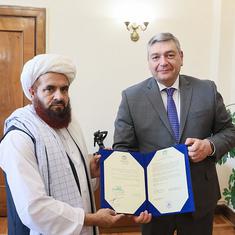It was the late in the evening on January 12, 1924. At the Servants of India Society house in Poona, the organisation’s President VS Srinivasa Sastri had just sat to have his supper, when the local doctor came rushing in and huffed out an urgent message: Mahatma Gandhi, incarcerated in Yerawada Jail on the city’s periphery, had been taken to Sassoon Hospital for an emergency operation to remove his appendix. Gandhi had asked to meet Sastri before his surgery.
Gandhi and Sastri had a history. When Gandhi returned from South Africa in early 1915, his guru Gopal Krishna Gokhale had wanted him to join the Servants of India Society, with an eye towards eventually leading it. Within the Society however, Sastri had functioned for several years as a devoted second-in-command. When Gokhale died in February 1915, at the relatively young age of 49, he had not appointed a successor.
After a testy meeting where Gandhi and Sastri differed widely on the goals of the Society, Gandhi withdrew his application to join. Sastri was appointed as the president a few months later. Gandhi would later, playfully, call Sastri “an amiable usurper”.
In the years to come, Gokhale’s two chief disciples came to occupy leading positions on opposite sides of the political spectrum. As Gandhi turned the Congress into a mass movement, Sastri became the leading force behind the liberals who viewed mass politics with deep scepticism, but played an often-forgotten critical role in pushing for political and constitutional reforms in British India.
From the standpoint of contemporary times, where political discourse often comes wrapped in personal hatred, it seems incredible that despite being feisty opponents who disagreed on almost every aspect of politics, Sastri and Gandhi remained bound by a deep sense of mutual love and respect. They would regularly defend each other passionately against rabid criticisms from their own political camps. They sought each other’s help whenever they were in either physical illness or moral quandary, and referred to each other as “brother”.
So hearing the news from Yerawada, Sastri rushed to the hospital about 5 km away. Gandhi was on a hospital bed and despite physical frailty exuded a sense of dignified calm. In his unfailingly humane manner, Gandhi first enquired about Sastri’s family and health, and then asked if Sastri would take down a statement for public release, in case Gandhi died.
In the statement, Gandhi thanked the doctors and expressed confidence in them whatever the results. He made it a point to acknowledge the British Indian government for the seriousness with which they had taken his illness. The government had even offered Gandhi the option to invite his own doctors. Gandhi knew full well that leaders like him could not afford to die under the government’s medical watch; his supporters would be susceptive consumers of yarns that readily spun his death into a deliberate act of the government.
As the medical staff scurried out to finish preparations, Gandhi and Sastri were left alone in the room. Sastri somberly muttered if there was anything Gandhi wanted to say. The Mahatma expressed, in rushing eagerness as if he had been waiting for Sastri’s prompt, that he did not wish his followers to agitate for his release after the operation. But if they did, they must strictly follow the non-violent path.
Calls for his release on account of ill health had snowballed in the previous weeks. Sastri himself had led one such effort within his party. Gandhi told Sastri that the prerogative to release him was entirely the government’s. His supporters could not demand it as a right, and no harm should be done to British people in India through any agitation.
Sastri asked whether Gandhi would issue this as a message that he could relay to his followers and the country. Gandhi tersely declined. He would scrupulously follow the prisoner’s code of honour, he explained. He was “civilly dead” and must not betray the government’s trust by communicating with the outside world.

Sastri was overawed by Gandhi’s disarming honesty, but hadn’t Mohamed Ali released a message from him not too long ago, he probed somewhat impetuously. It turned out later that Ali had disingenuously twisted Gandhi’s personal message to him a few months earlier. Gandhi’s response to Sastri was of mild astonishment: “Mr. Mahomed Ali! A message from me!” That is all he could utter when a nurse came and signaled Sastri to leave.
As Gandhi’s body was surgically sliced inside the operation room, Sastri waited outside. Agonised by Gandhi’s expression of surprise, he felt indignant at his indiscretion. But at the same time, Young India recorded him as saying that marveled at Gandhi’s “high-mindedness, forgiveness, chivalry, and love transcending ordinary human nature”.
Sastri had been the most resolute of Gandhi’s critics on the non-cooperation movement. But on this day, he noted: “…what mercy it was that the Non-Co-operation movement should have had a leader of such serene vision and sensitiveness to honour”.
The following morning, upon being informed that Gandhi was now stable, Sastri released a statement to the public offering assurance of his health. The country heard from Gandhi for the first time in 22 months through a moving description of his fortitude and forthrightness, quite appropriately, from one of his staunchest political adversaries
The Gandhi-Sastri relationship was not a personal relationship which, as we sometimes idealise such ties, they would keep separate from their politics. But instead, their relationship was primarily and deeply political. It was based on shared principles about what politics ought to be, for which they held each other in high personal regard and indeed drew lessons for their own political behaviour.
Vineet Thakur teaches International Relations and History at Leiden University, the Netherlands.










